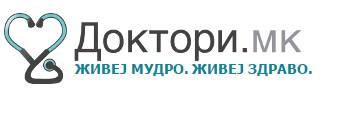JSER Policies
JSER Online
JSER Data
Frequency: quarterly
ISSN: 1409-6099 (Print)
ISSN: 1857-663X (Online)
Authors Info
- Read: 60666
|
ЕТИОЛОГИЈА НА ГОВОРНИТЕ ОШТЕТУВАЊА ВО "ЗАВОДОТ ЗА РЕХАБИЛИТАЦИЈА НА СЛУХ, ГОВОР И ГЛАС" - СКОПЈЕ
Ана КАРЕВСКА 1
Невработен дефектолог 1 |
|
ETIOLOGY OF SPEECH DISORDERS IN “INSTITUTE FOR REHABILITATION OF HEARING, SPEECH AND VOICE” - SKOPJE
Ana KAREVSKA1
Unemployed special educator 1 |
|
Скопје, Македонија
|
|
Skopje, Macedonia |
|
Вовед |
|
Introduction |
|
Родителите, биолозите и филозофите се сложни во едно: дека говорот, повеќе од која и да е друга способност ги разликува луѓето од животните. Всушност, детскиот говорен развој често е користен како мерило и индикатор за нивниот понатамошен општ развој и многу препораки за проценка на развојот започнуваат со родителската загриженост за говорните способности на нивното дете. Истовремено и многу развојни нарушувања (вклучувајќи и ментална ретардација, аутизам, проблеми во учењето и церебрална парализа) резултираат во одредено нарушување на говорните способности.
|
|
Parents, biologists, and philosophers do agree in one thing: that speech, more than any other ability separates people from animals. Actually, children speech development is often used as a measure and pointer for their future general development, and many recommendations for evaluation of the development begin with the parents’ concern about the speech abilities of their child. At the same time, many development disorders (including mental retardation, autism, learning disabilities, and cerebral palsy, result in specific disorder of the speech abilities. Human communication is a complex phenomenon, with two primary segments: language and speech. Each of them is composed by numerous components. The neurological machine which enables us to understand and produce speech is very complex. In a certain way, it is a real miracle that so many children can overcome this phenomenon in such an easy way.
The speech disorder contains every change of the state, in the structure of verbal communication, caused by numerous factors, which can restrict the person as a biological, mental, social individual. In other words, the speech disorders absence of verbal communication (3).
|
|
|
||
|
|
||
|
|
|
|
|
Материјал и методи |
|
Material and methods |
|
Во ова истражување се вклучени 131 лице, поделени во две групи. Групите не се изедначени по пол и возраст, а испитаниците се избрани по пат на случаен избор.
Истражувањето беше изведено во Скопје, во „Заводот за рехабилитација на слух, говор и глас” и во Основното училиште „Кирил Пејчиновиќ” во периодот од 05.11.2004 до 30.12.2004 година. |
|
This research includes 131 subjects, divided in two groups, which are not equal by sex and age, and the subjects have been chosen by random choice.
The research was conducted in Skopje, at the “Institute for Rehabilitation of Hearing, Speech and Voice” and the primary school “Kiril Pejchinovikj” for the period from 05.11.04 to 30.12.04. |
|
Резултати со дискусија |
|
Results with discussion |
|
Во експерименталната група има 67% испитаници од машки пол и 33% испитаници од женски пол (табела 1). Во контролната група има 13 испитаници од машки пол и 18 испитаници од женски пол. Од табела 1 може да се види дека постои статистички значајна разлика меѓу испитаниците од двете групи во однос на полот (р=0,02), односно машкиот пол два пати почесто се среќава во испитуваната група. |
|
There are 67% male examinees and 33% female examinees in the experimental group (Table 1). In the control group there are 13 male and 18 female examinees. |
|
|
|
|
|
Табела 1.Распоред на испитаниците според пол |
|
Table 1.Order by sex of the examinees |
 |
|
|
|
|
|
Табела 2. Членови од семејството со говорно оштетување |
|
Table 2. Members of the family with speech disorder |
 |
|
Табела 3. Компарација меѓу двете групи за членови од семејството со говорно оштетување |
|
Table 3. Comparison between the two groups for members of the family with speech disorder |
 |
|
Во табела 4 се обработени менталниот статус и ортодонтскиот преглед на испитаниците од експерименталната група. Шеесет и седум од испитаниците (73,6%) се со просечни интелектуални способности, додека 24 (26,4%) од нив се со подпросечни интелектуални способности. Во врска со ортодонтскиот преглед 36 (39,6%) испитаници имаат уреден наод, додека 55 (60,4%) испитаници имаат патолошки ортодонтски наод. |
|
Table 4 shows the mental status and orthodontic examination of the examinees from the experimental group. Sixty-seven of them (73.6%) are with average intellectual abilities and 24 (26.4%) are with under average intellectual abilities. From the orthodontic examination we can see that 36 (39.6%) of the examinees have normal diagnosis, while 55 (60.4%) of the examinees have pathological orthodontic diagnosis. All the examinees from the control group have normal intelligence and normal orthodontic diagnosis. |
|
|
|
|
|
Табела 4. Ментален статус и ортодонтски преглед на испитаниците |
|
Table 4. Mental status and orthodontic diagnosis of the examinees |
 |
|
Табела 5. Компарација на менталниот статус во испитуваните групи |
|
Table 5. Comparison of the mental status in the examined groups |
 |
|
Резултатите од ортодонскиот преглед на испитаниците (табела 6) покажуваат дека постои статистички значајна разлика помеѓу двете групи (р<0,001). |
|
Also, the results about pathological orthodontic diagnosis (table 6) between the two groups show significant statistical difference (p<0,001). |
|
|
|
|
|
Табела 6. Ортодонтски преглед на испитаниците |
|
Table 6. Orthodontic diagnosis of the examinees |
 |
|
Заклучоци |
|
Conclusions |
||
|
Согласно поставените цели на истражувањето и врз основа на анализата на резултатите се утврди дека: |
|
In accordance with the aims of the research and based on the analysis of the results it was established that: |
||
|
|
|
||
|
|
|
|
||
|
Citation:Karevska A, Trajkovski V. Etiology of Speech Disorders in “Institute For Rehabilitation of Hearing, Speech and Voice” – Skopje. J Spec Educ Rehab 2005; 6(1-2):27-34. |
||||
|
|
||||
|
Литература / References |
|
|
||
|
|
|
|
||
Share Us
Journal metrics
-
 SNIP 0.059
SNIP 0.059 -
 IPP 0.07
IPP 0.07 -
 SJR 0.13
SJR 0.13 -
 h5-index 7
h5-index 7 -
 Google-based impact factor: 0.68
Google-based impact factor: 0.68
Related Articles
10 Most Read Articles
- PARENTAL ACCEPTANCE / REJECTION AND EMOTIONAL INTELLIGENCE AMONG ADOLESCENTS WITH AND WITHOUT DELINQUENT BEHAVIOR
- RELATIONSHIP BETWEEN LIFE BUILDING SKILLS AND SOCIAL ADJUSTMENT OF STUDENTS WITH HEARING IMPAIRMENT: IMPLICATIONS FOR COUNSELING
- EXPERIENCES FROM THE EDUCATIONAL SYSTEM – NARRATIVES OF PARENTS WITH CHILDREN WITH DISABILITIES IN CROATIA
- INOVATIONS IN THERAPY OF AUTISM
- AUTISM AND TUBEROUS SCLEROSIS
- THE DURATION AND PHASES OF QUALITATIVE RESEARCH
- REHABILITATION OF PERSONS WITH CEREBRAL PALSY
- DISORDERED ATTENTION AS NEUROPSYCHOLOGICAL COGNITIVE DISFUNCTION
- HYPERACTIVE CHILD`S DISTURBED ATTENTION AS THE MOST COMMON CAUSE FOR LIGHT FORMS OF MENTAL DEFICIENCY
- DIAGNOSTIC AND TREATMENT OPTIONS IN AUTISTIC SPECTRUM DISORDERS – AN OVERVIEW
















